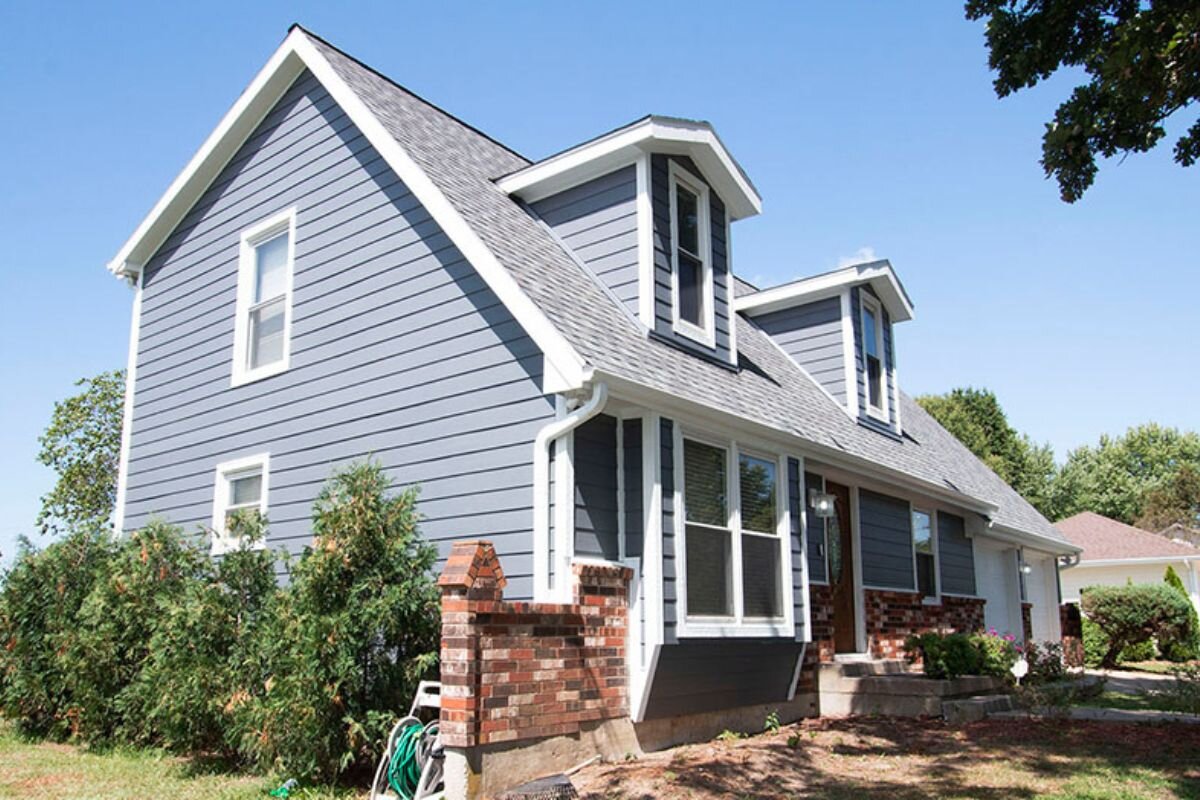Colonial homes are more than just houses; they’re symbols of American heritage, blending history with timeless charm. In St. Louis, where these classic designs are prevalent, preserving their beauty while adding modern practicality is key. The right siding styles & colors for Colonial homes can achieve this balance, honoring the traditional aesthetic while ensuring durability for the future.
Classic Design with Modern Durability
Colonial homes are characterized by their symmetry, simple lines, and often a formal, dignified appearance. When it comes to siding, these homes traditionally featured plank lap siding, a style that was prevalent in the 1800s. However, while wood was the material of choice back then, it comes with several drawbacks, including susceptibility to rot, moisture penetration, and damage from pests like woodpeckers.
This is where modern materials, such as James Hardie siding, come into play. James Hardie siding offers the authentic, classic wood look that is essential for maintaining the Colonial charm but without the maintenance hassles of wood. This fiber cement siding is resistant to rot, moisture, and pests, making it an ideal choice for homeowners who want the best of both worlds—historical authenticity and modern durability.
Benefits of James Hardie Siding for Colonial Homes
What makes James Hardie siding particularly suitable for Colonial homes is its ability to mimic the rich, authentic look of wood without the associated drawbacks. Unlike wood, which is prone to issues like rotting, moisture penetration, and damage from pests, James Hardie siding is designed to withstand these challenges. This makes it an excellent choice for Colonial homes, where maintaining a classic appearance is crucial.
With James Hardie siding, you can opt for a wide plank design that enhances the Colonial aesthetic. This style not only offers a substantial, authentic wood look but also provides long-lasting durability. Moreover, the pre-finished, baked-on colors available with James Hardie siding are perfect for Colonial homes, offering shades that align with traditional Colonial color schemes, such as white, dusty blue, and light tan.
Choosing the Right Siding Styles for Colonial Homes
When selecting siding for a Colonial home, it’s important to stay true to the traditional design elements while also considering the practical aspects of modern materials. Here are some key considerations:
- Plank Width: The width of the plank is crucial in achieving the right look for a Colonial home. In St. Louis, a 7-inch plank width is the most popular choice. This width offers a rich, authentic wood appearance that closely resembles the original siding found on historic homes. It’s also cost-effective, providing both beauty and value. For those looking for a more substantial appearance, wider planks, like 10-inch, are an option, though 7-inch remains the most authentic and common choice.
- Trim Profiles: The trim is another important element that can significantly impact the overall look of your home. Contrasting trim colors have become increasingly popular, allowing you to highlight architectural details like windows and doors. For instance, pairing a Cobblestone siding color with Arctic White trim creates a striking contrast that enhances the classic Colonial design.
- Monochromatic Color Schemes: For those who prefer a more uniform look, a monochromatic color scheme—using the same color for both siding and trim—offers a clean and classic appearance. This approach is particularly effective in creating a timeless design that will look just as good in 10 or 20 years as it does today.
Deciding on Plank Width and Trim Profile
Every Colonial home has its unique character, and selecting the right design elements involves more than just picking a siding style and color. The plank width and trim details are crucial in preserving the historical integrity of the home while also enhancing its curb appeal.
- Plank Width: The choice between 5-inch, 7-inch, or even 10-inch planks can dramatically alter the look of your Colonial home. While the 7-inch plank is most popular in St. Louis for its balance of cost-effectiveness and authentic appearance, wider planks can be used for a more dramatic effect.
- Trim Profiles: The trim profile is another area where Colonial homes can shine. Contrasting trim colors can add depth and interest, while a monochromatic scheme provides a clean, cohesive look. Choosing the right trim profile helps to highlight the architectural details that make Colonial homes so distinctive.
Color Choices and Timeless Design
Color plays a vital role in the aesthetic of a Colonial home. Traditional colors such as whites, light blues, and tans are perennial favorites. These colors not only complement the architectural style of Colonial homes but also contribute to their timeless appeal.
James Hardie siding offers a range of pre-finished, baked-on colors that are both durable and fade-resistant. Some of the most popular choices for Colonial homes include:
- White: A classic choice that embodies the purity and simplicity of Colonial design.
- Dusty Blue: Offers a subtle hint of color while maintaining the traditional look.
- Light Tan/Taupe: Adds warmth and sophistication to the home’s exterior.
When selecting a color, it’s important to consider not only how it will look today but how it will age over time. The goal is to choose a color that will remain stylish and appealing for decades to come.
In Summary
Selecting the best siding styles & colors for Colonial homes is about balancing tradition with modern needs. By choosing the right materials, plank width, trim, and color, you can enhance your home’s historical charm while ensuring it remains durable and beautiful for years to come. Whether you prefer the classic look of wide plank lap siding or the subtle elegance of monochromatic color schemes, the key is to make choices that honor the past while embracing the future.
If you’re ready to transform your Colonial home with the best siding styles & colors, contact us today. Our team of experts is here to help you select the ideal design elements that will stand the test of time.














